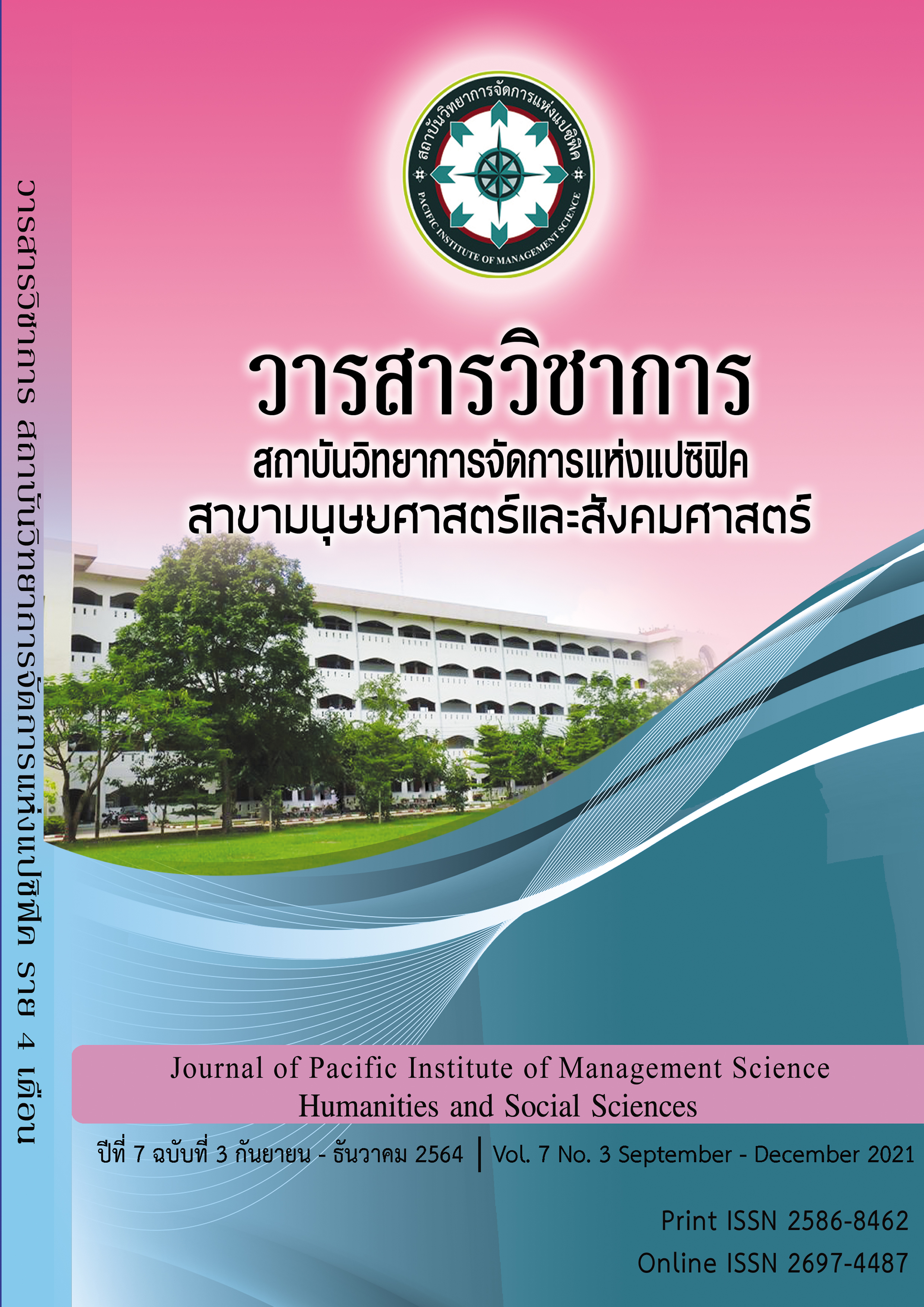Factor Analysis of a Decision Making Model for Outsourcing Flexible Automation System in Automotive Industry to SMEs Entrepreneurs and Executives in Thailand
Keywords:
SMEs, Smart Manufacturing, Flexible Automation, OutsourcingAbstract
In the current globalization era, in the automotive parts industry. Thailand has become an important hub for automotive parts manufacturing and plays an important role in global economics become to important hub for automotive parts production due to low labor and production costs. In the new era, entrepreneurs and managers are extremely important in building a business survival method in a competitive environment and implementing change. In addition, flexible automation has become an important, as it provides system efficiency,which results in sustainable growth. Outsourcing has become very popular. In general, a sustainable system should have sufficient capacity to provide services without disruption. Especially in an economic crisis. Therefore, this article aims to examine the importance of change management to enable sustainable outsourcing in automotive parts.
The survey was conducted by using questionnaires to 260 SMEs, at least managers within SMEs manufacturer context. The results suggested significant relationship among SMEs decision to shift toward smart manufacturing by using by the outsourcing. If the changes emanating from outsourcing are managed satisfactorily, it would result in possible free of not disruptions. However, to make changes happen successfully is one of the most challenging tasks faced by the leadership and corporate management of the organizations.
This research contributes to the knowledge regarding the relationships among SMEs decision to smart manufacturing, flexible automation and benefit of outsourcing. To achieve a high level of SMEs decision to shift toward smart manufacturing in consistent quality, profitability, productivity and growing business to sustainability. SMEs must concentrate on inspirational motivation and utilization to improved manageability, improve flexibility, and achieve to advantage technologies to shift toward smart manufacturing.
The statistical significance has the highest value of factor loading not lower than 0.819. The significant finding illustrated that factors, mostly affect entrepreneurs’ decision-making are competitive factors in quality, price, durability and quantity or flexibility of flexible automation system. Confirmatory model of the variable in question was consistent with the empirical data considered from 2 = 275.34, df = 251, p-value = 0.13952, RMSEA = 0.018, GFI =0.936 และ AGFI = 0.911
References
Abebe, M. A., & Angriawan, A. , 2011. The internationalisation of small and medium-sized enterprises (SMEs): A multi-level integrative framework. International Journal of Entrepreneurship and Innovation Management, 13(3/4), 377-397. doi:10.1504/IJEIM.2011.039828
Anand et al.,2009. Dynamic capabilities throughcontinuous improvement infrastructure. Journal of Operations Management. 27:444- 461
Agus, A. and M.S. Hajinoor, 2012. Lean production supply chain management as driver towards enhancing product quality and business performance. Int. J. Qua!. Rehab. Manag., 29: 92-121.
Abdulkareem S. Awwad, Adel A. Al Khattab, John R. Anchor, 2013. Competitive Priorities and Competitive Advantage in Jordanian Manufacturing. Journal of Service Science and Management, Vol. 6 No. 1, 2013, pp. 69-79
Barney, J.B. and W.S. Hesterly, 2010. Strategic Management and Competitive Advantage. Prentice-Hall, Boston, USA.
Boksberger, P. and Melsen, L. (2011). Perceived value: a critical examination of definitions, concepts and measures for the service industry. Journal of Services Marketing, Vol. 25 No. 3, pp. 229-240
Boulos, et al., 2015. The durability of products: standard assessment for the circular economy under the Eco-Innovation Action Plan. Report for European Commission, DG Environment.
Brown, D., & Wilson, S. (2012). The black book of outsourcing: How to manage the changes, challenges, and opportunities. NJ: John Wiley & Sons.
David Z. Zhang, (2011). Towards theory building in agile manufacturing strategies-Case studies of an agility taxonomy. International Journal of Production Economics. Volume 131, Issue 1, May 2011, Pages 303-312.
Dudin, M., Frolova, E., Gryzunova, N., & Shuvalova, E. (2015). The Deming Cycle (PDCA) Concept as an Efficient Tool for Continuous Quality Improvement in the Agribusiness . Asian Social Science. – Vol. 11. No. 1.- P. 239- 246, 2015.
Hui, E. Y. Y., & Tsang, A. H. C. ,2004. Sourcing strategies of facilities management. Journal of Quality in Maintenance Engineering, 10(2), 85-92. doi:10.1108/13552510410539169
Jitpaiboon, Thawatchai (2014). The Study of Competitive Priorities and Information TechnologySelection: Exploring Buyer and Supplier Performance.Journal of International Technology and Information Management: Vol. 23 : Iss. 3 , Article 6
Kinyua, (2015). An Assessment of Just In Time Procurement System on Organization Performance :A Case study of Corn Products Kenya Limited. Journal of Business and Social Sciences, Vol. 4, No. 05, August 2015.pp(40-53)
McIvor, R. ,2005. The outsourcing process: Strategies for evaluation and management. New York, NY: Cambridge University Press.
Downloads
Published
Issue
Section
License
Copyright (c) 2022 Pacific Institute of Management Science

This work is licensed under a Creative Commons Attribution-NonCommercial-NoDerivatives 4.0 International License.
บทความที่ได้รับการตีพิมพ์เป็นลิขสิทธิ์ของ สถาบันวิทยาการจัดการแห่งแปซิฟิค
ข้อความที่ปรากฏในบทความแต่ละเรื่องในวารสารวิชาการเล่มนี้เป็นความคิดเห็นส่วนตัวของผู้เขียนแต่ละท่านไม่เกี่ยวข้องกับสถาบันวิทยาการจัดการแห่งแปซิฟิค และคณาจารย์ท่านอื่นๆในสถาบันฯ แต่อย่างใด ความรับผิดชอบองค์ประกอบทั้งหมดของบทความแต่ละเรื่องเป็นของผู้เขียนแต่ละท่าน หากมีความผิดพลาดใดๆ ผู้เขียนแต่ละท่านจะรับผิดชอบบทความของตนเองแต่ผู้เดียว







